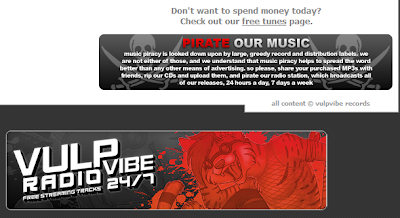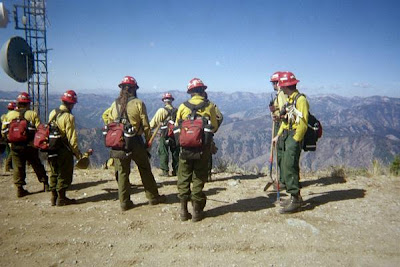What happens to individuals who are experiencing PTS(D) (Post Traumatic Stress (Disorder)) is that certain memories, due to their peculiar nature or the nature of the environment that they happen in, are not processed, categorized, and stored adequately into the brain. The traumatic event continues to “vibrate” or emit emotion from deep inside the psyche, causing emotions of anxiety, paranoia, depression, and an array of other emotions to overlap onto the individual’s everyday experience. Symptoms include road rage, sudden angry outbursts, dramatic mood swings, paranoia, depression, heavy drug use, work addictions; there are many manifestations the individual will display when trying to suppress the memories of a traumatic experience that have not been processed correctly.
Will PTSD Go Away With Time?
PTSD will not go away with time, it will actually get worse and the behaviors will become more ingrained and adopted as ones personality. It is vital that PTSD is cured as soon as possible. If left untreated, the violence, depression, and anxiety will affect the individual until death. The unhealthy behavior patterns created from dealing with PTSD can be passed into the society or adopted by offspring and transmitted into the next generation.
For soldiers and others dealing with a war experience, healing PTSD should be incorporated into a transitional period of six months to two years that adequately adjust the individual into a peaceful society. Expecting an individual to adjust on their own from a war zone into a peaceful society is kin to sending a soldier into a battle without bullets, they’ll have a gun that they believe in, but when it comes down to it they are unarmed, vulnerable, and will not stand a chance in hell dealing with the experience by themselves.
Good News;Bad News of Healing Post Traumatic Stress Disorder.
The good news is that there are many solutions that can successfully heal the wounds from traumatic events; the bad news is that they are not easy. In almost all cases the traumatic event must be remembered in order to be re-processed and understood. When the memory is remembered, processed, and properly stored, and the individual can then continue their life conscious of the memory of what has happened and how it has changed them, or incorporated the event into their life view or outlook, then they are healed. This is not an easy process and takes time, honesty, and support from fellow soldiers, family, and the community.
Solutions for Healing PTSD
The solution of minimizing the effects of PTSD is that the memories must be elicited from the mind and put on the proverbial table, or, to use a better analogy, the proverbial soil. The memories must be held in conscious understanding as they are given time to sink into the soil and become part of the individuals make up or “psyche”. This is not easy and will take the resource of a trained councilor. The memories do not just sit peacefully on the soil, instead they boil there on the surface as the individual tries to consciously interpret the events; the soldier can and will most likely be in an agitated stated while these memories are discussed, broken down and processed. By going through the process of not letting the memories be hidden and forgotten we keep the memories in view, as painful as it will be, for the days and weeks that it takes to process the experience. If the soldiers are in a safe area where all they need to think about are the memories, this transition of holding the memories in their conscious to process them, talking about them with other soldiers and consolers, could take as little as a weak. Possibly more time will be needed for more complicated cases such as predisposition to bi-polar disorder, depression , or other possible pre-existing situations that have to be taken into affect in dealing with additional mental trauma. Traumatic situations can trigger mental disorders and certainly are more complicated combined with various mind states.
What Is Processing?
Processing means to come to an understanding, to come to terms with, to get what you can out of, to incorporate into the self and understanding of the world, to understand and move beyond by reviewing a situation and finding out what happened and why. Although a soldier will have been gone from their loved ones for years, I suggest that there should be the resources for them to, if they so choose at any time, enroll themselves in a inpatient setting where they can safely de-brief and process the war experience with other soldiers, proper nutrition, drug free environment, and trained military professionals helping them come to a more stable mind frame. This process could take a week, a month, or six months. The overall transition to becoming a civilian from active war duty could easily take two years.
A cured soldier will still remember and feel the emotions that they experienced but they will not be debilitative and will not suddenly send them into erratic behavior. There probably will not be a day that passes that a soldier will not have a thought about their war experience, in the terms of PTSD, thinking about the experience is healthy, and shelving the experience worsens the symptoms.
Most soldiers are going to need at least three to six months of a multiple faceted incorporation process. The heart of this process is three part consoling. The first is soldier and families, this allows his/her family together to understand the causes of the behaviors and the entire family unit is able to work through the transition together. The second is soldiers with soldiers; this group allows the soldiers to talk openly about the specific experiences which are vital in processing the experience. The soldier needs other soldiers to create an environment where the specific war memories can be discussed; most soldiers will have no one else able to hear the horror that they witnessed, such is the case in the family environment or the work environment. Support from fellow soldiers is vital as they are now all on their new mission to incorporate into a society peacefully and they are not to leave any one of their comrades behind. The third is for family members; generally a four part class should take place before the soldier returns and be sufficient to prepare the loved ones of what to expect, what to watch out for, and who to get in contact with when things are tuff.
We cannot expect a soldier to “just adjust”, even sitting in the sunshine in the front yard the soldier will have memories and thoughts racing through his/her heads for months as the brain processes all the information. The soldier and their family must have access to counseling as a family, spouse counseling, which will help ease the strain on a relationship that the healing and reintegration process will endure. The process will be hard on the family, children, and friends, and we must not let the soldier’s life go to pot as they try to process the experience and become the person they will become having had such an experience.
The peculiar thing with this type of war, as with Vietnam, is that there is not a front line and a rear base, the soldier is constantly, 24-7, at risk of suddenly and without warning, being blown up or shot in the head. These conditions do not allow for time to think about anything other than what the soldier is to do to survive. If they spend even a moment thinking about what has happened when something has happened they are putting themselves at danger of being killed by whatever is happening. Although, if the soldier can, as soon as they have time, write the experience in a journal in as much detail as they can, every chance they get if possible, then they will have a great tool in processing the trauma. This will immensely help in the healing process later on and be a vital weapon for the soldier to use in their fight against PTSD.
Veterans Helping Veterans
There are many Vietnam vets who are just now understanding how the war affected their lives; they can play a vital role in healing their younger comrades heal while strengthening their own healing process. The Vietnam vets, or first gulf war veterans who have healed and adjusted will know the exact nature of thoughts and emotions the soldiers are experiencing. Soldiers will listen to a fellow soldier easier than someone who does not know what combat is like. Although, it is imperative that the soldiers open up to the help of the spiritual/emotional community and the therapist and counselors who can help them.
The Nature of Counseling and Intelligent Strong People.
It is the inherent nature of a soldier to be as tuff as nails, and independent, as well as dependent on their fellow soldiers; most soldiers will refuse help on the basis that they can “handle anything” or that they do not need anybody. Their thinking might be, "I survived a war, I can survive anything”. But they will quickly find out that the memories and chaos will not disappear on their own. The soldier must come to realize that it’s the strong and smart person who will use the tools and resources available to them. They might have survived the battlefield, but without treatment, it just may be dinner at the mother-in-laws that kills them.






